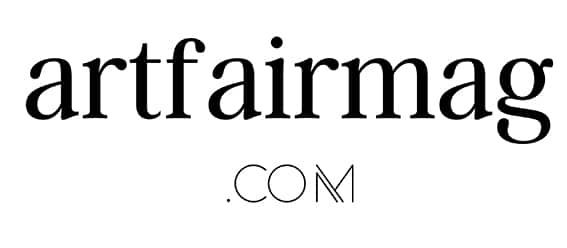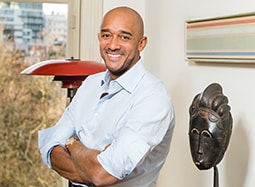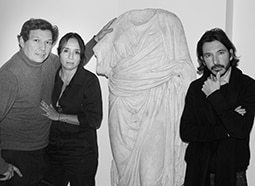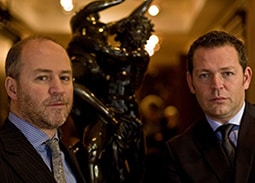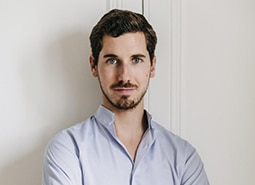Xavier Eeckhout
While he was not destined for the art world and had started his career in real estate, Xavier made a 360° to open his first gallery in 2000. He made the audacious choice to turn to a very specialized field: animal art, especially sculpture. Initially located in rue Saint Lazare, in the district of the Hotel Drouot, the gallery Xavier Eeckhout moved several times before settling in 2018 rue Jacques Caillot, in the heart of Saint-Germain des Prés. It hosts many exhibitions around a given theme (Everything but Bronze, 2019) or highlighting an artist (Mateo Hernandez, 2021).
Xavier Eeckhout
While he was not destined for the art world and had started his career in real estate, Xavier made a 360° to open his first gallery in 2000. He made the audacious choice to turn to a very specialized field: animal art, especially sculpture. Initially located in rue Saint Lazare, in the district of the Hotel Drouot, the gallery Xavier Eeckhout moved several times before settling in 2018 rue Jacques Caillot, in the heart of Saint-Germain des Prés. It hosts many exhibitions around a given theme (Everything but Bronze, 2019) or highlighting an artist (Mateo Hernandez, 2021).
Animal Art
8 bis, rue Jacques Callot
75006 Paris, FR
+33 (0)1 48 00 02 11
xavier@xaviereeckhout.com
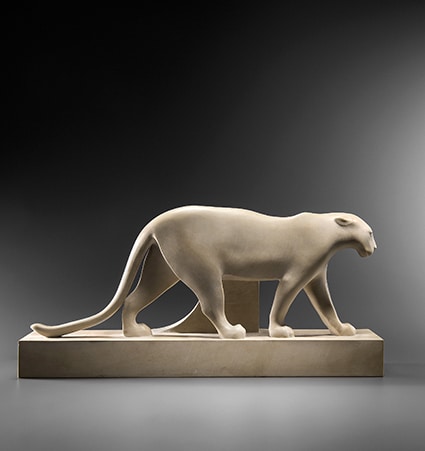
Black panther, 1925
(Saulieu, 1855 – Paris, 1933)
Lithographic stone, signed
Unique piece
H. 19 cm ; L. 39,5 cm; P. 8 cm.
Provenance:
Jacques André, bought directly from the artist at the Salon des Tuileries in1928;
Pierre André, by descent;
then in the family until today.
Exhibited:
Salon des Tuileries, Paris, 10th May – 16th June 1928, n°2292 bis
All our Interviews

Read all our exclusive interviews with antique, modern, contemporary & primitive art dealers.

Interview with Xavier Eeckhout ~ Founder
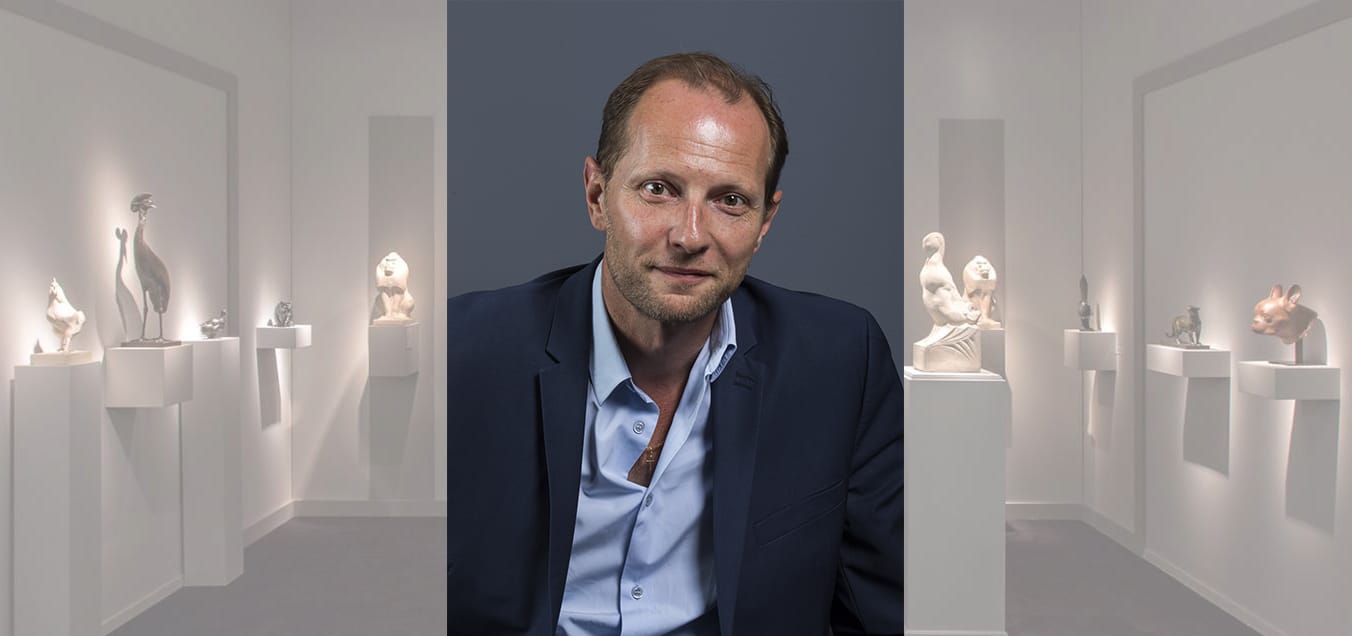
Xavier Eeckhout, and his gallery in the background
Interview by Pauline Loeb-Obrenan, founder of artfairmag.
Member of three art experts unions – the Syndicat National des Antiquaires, the Syndicat Français des Experts Professionnels en Œuvres d’Art et objets de collection and the Chambre Royale des Antiquaires de Belgique – Xavier Eeckhout is one of the most respected animal art dealers of his generation. Here he explains how he came to this profession, what animal art encompasses and how he deals with this unprecedented context.
artfairmag: Xavier, for those who don’t know you yet, who are you and how did you come to this very specialized field : animal art?
Xavier Eeckhout: I am the owner of a gallery in the heart of Saint-Germain-des-Prés, and I am an expert, exclusively specialized in animal sculpture from the first half of the 20th century. It’s a very specialist field. I arrived late in Paris, after spending my youth in the countryside. My grandparents worked on a farm, the village where I lived was surrounded by forests, I liked horseback riding. All of this must be the genesis of my taste and my specialty.
artfairmag: You represent the greatest names in this field as Pompom, Barye, Bugatti, Carpeaux, or Becquerel, alongside talented but lesser-known artists. How do select these artists?
X. E.: Indeed, the gallery presents internationally established artists, but also likes to showcase talented artists remained confidential for no reason. I select these artists because I like their works and because of their fascinating history. In the case of Marcel Lémar, he was a penniless postman, one of François Pompon’s friends, and committed suicide. Although he wasn’t known during his lifetime, the Museum La Piscine de Roubaix dedicated him a retrospective in 2014.
artfairmag: I’m curious about the profile of your buyers. Is there a typical profile or on the contrary, a great diversity within the ones interested in animal art?
X. E.: The profile of our collectors is plural. Some customers have a crush on a horse for example, because they own one themselves. But most are very knowledgeable. They collect either an animal variety or an artist. The most imporant for them is the date of edition, the cast, the chasing and the patina.
artfairmag: Does anthropomorphism, particularly from the fables of Esope or La Fontaine, have an impact on the taste of collectors? Are there animals that are highly sought-after and, on the contrary, others difficult to sell because of the fantasies they convey?
X. E.: I wouldn’t say that anthropomorphism is a notion that influences the choice of collectors. But it is obvious that it is easier to sell a feline than a slug…
“Through hard and passionate work of gallery owners, animal sculpture is no longer a minor art but a true art in its own right.”
artfairmag: Before the Salon de Paris of 1831, animal sculpture was rather considered as a minor art. It then experienced a golden age in the 19th and 20th centuries. What is the situation today?
X. E.: Indeed, animal sculpture has long been considered purely decorative. In recent years, everything has changed : the exhibitions Beauté animale at the Grand Palais in Paris (2012), From Barye to Bugatti, Les Animaliers at the Museum Beelden aan Zee in The Hague (2011), Rembrandt Bugatti at Alte Nationalgalerie in Berlin (2014), and the animal section of the Museum La Piscine in Roubaix ; through hard and passionate work of gallery owners, animal sculpture is no longer a minor art but a true art in its own right.
artfairmag: I feel like sculptures, espacially in bronze, must be seen in real to reveal the beauty of their patina, to create an emotion. With the pandemic, the art world has been forced to enter the digital era. How do you adapt? Do you think you need to reconsider the way you sell?
X. E.: Sculpture, like other fields, has suffered greatly from this pandemic. We need to reorganize ourselves. The lack of art fairs is very damaging to our business. We need to rethink the way we meet with collectors, take time, organize presentations of objects, lunches at the gallery, provide detailed files of the objects. We must create an emulation and an excitation, as during the openings of the international art fairs.
artfairmag: Are you personally a collector and if so, do you collect the same kind of pieces you sell?
X. E.: Indeed, I am a collector myself. Of course I like animal sculpture, especially François Pompon and Roger Godchaux. I am currently writing the catalogue raisonné of his work. But my tastes are very eclectic, ranging from antique marbles to a Yves Klein coffee table.
artfairmag: Now, could you tell us more about an artwork you like, which may or may not come from your gallery?
X. E.: Pompon is my favorite French artist. He revolutionized animal sculpture by introducing the notion of “smooth”. He was only recognized 10 years before his death thanks to his polar bear (in 1922). Panthers and bears are his major works, extremely rare on the market. This stone panther was acquired directly from Pompon at the Salon des Tuileries in 1928, and has remained in the same family ever since. The material is rare (lithographic stone is very soft and pleasant to the touch). Pompon’s stones and marbles are highly sought after (he started working as a marble mason in the Montparnasse cemetery, then as a stonemason in Rodin’s workshop).
More Interviews
Didier Claes
Didier Claes is one of the most widely renowned specialists in the domain of ancient African art. His gallery is located in Brussels, in the lively Sablon district.
Galerie Chenel
Facing the Louvre museum, Galerie Chenel has a powerful atmosphere with its contemporary setting that truly emphasizes the high-quality antique sculptures that they present.
TOMASSO
Previously known as Tomasso Brothers Fine Art, the gallery is specialized in high-quality European Sculpture from the early Renaissance to the Neo-Classical period.
Oscar Graf
The two Oscar Graf’s galleries are devoted to French, British and American furniture and works of art from the early-Victorian period to the beginning of World War I.
